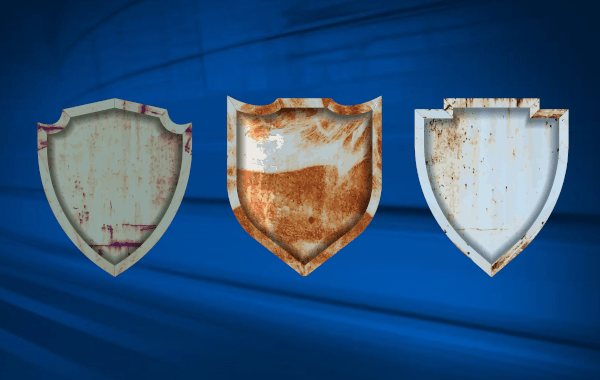
The hydraulic components, thanks to the ability to manage considerable power through reduced dimensions and weights compared to other technologies, are used in several applications, both stationary and mobile, in the most varied environmental and atmospheric working conditions.
The specific conditions of the working environment (humidity, climate, chemical composition of the fluid, etc.) can influence the performance of the hydraulic components and determine corrosion phenomena, therefore it is essential to know the most common corrosion phenomena in hydraulic applications and to choose the product with the correct treatment for your system.
What is corrosion?
Corrosion is a phenomenon of gradual deterioration of a metal material due to interaction with the surrounding environment.
Corrosion is caused by the electrochemical interaction between metal materials and chemical or climatic agents present in the environment that compromise the characteristics and physical properties of the material.
What are the main corrosive agents in a hydraulic system?
Corrosive agents are substances present in the environment, such as, for example, industrial pollution, saltiness, humidity, water, chemicals, etc. which can cause, depending on the material used in the system components, surface corrosion, erosions, punctures (by contact), cracks (by ventilation) or selective corrosion, such as cracks caused by vibrations and oscillations.
What are the main consequences of corrosion?
Corrosion has several consequences, that are often more serious than the simple loss of mass of the metal: the deterioration of the material used in the equipment, machinery and components can have important effects on the safety, reliability and operational efficiency of the entire plant.
Corrosion determines:
- Thinning of the material
- Perforation or breakage of the material
- Embrittlement and deterioration of the characteristics of the material
This can lead to:
- Reduction of the service life of components and systems
- Unforeseen breakages earlier than planned
- Loss of fluid and material with possible pollution problems or dangerous situations in case of release of noxious and / or flammable material.
- Production stops and sudden failures
Corrosion cannot be completely stopped but it can be certainly countered with appropriate treatments.
How to protect the hydraulic components from corrosion?
The fight against metal corrosion is very old, while the prevention of corrosion in the modern sense was born in the eighteenth century with the introduction of pigmented protective paints. However, the techniques used today have been developed only in the last century.
One of the most common methods of corrosion prevention is the use of metal coatings: by means of surface protection treatments the material is isolated from the external environment, thus blocking the corrosion processes.
There are various types of treatment for the protection of the components of a hydraulic system which depend on the application within the system and on the characteristics of the environment and the type of fluid used. For example, the pressure filters use materials such as stainless steel and aluminum to withstand the high operating pressures, while the return filters are made of aluminum and polyamide, therefore the various components, depending on the application and position inside the system, are subject to different treatments.
Methods for resisting corrosive processes
Methods for protecting metal parts from corrosion can be divided into the following groups:
- application of non-metallic substances or metallic coatings;
- saturation by diffusion of the surface layer;
- coating with resistant oxide films (chemical coatings);
- use of corrosion resistant alloys;
- the use of corrosion inhibitors.
In the coming months we will deepen in detail the various methods listed above to protect the metal parts of the hydraulic components from corrosion.
In the meantime, for any doubt or further information, please contact our Sales Team.
Stay tuned!